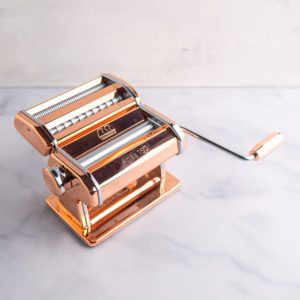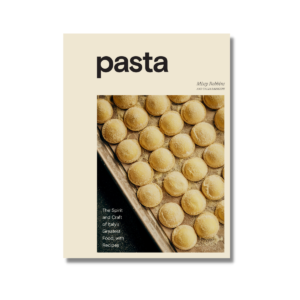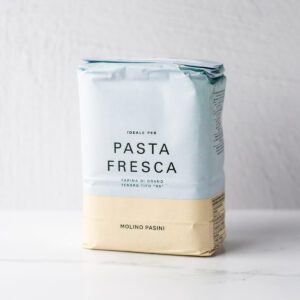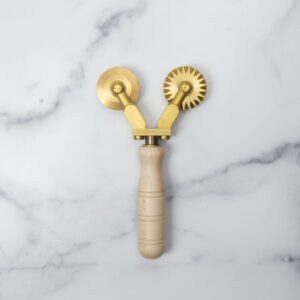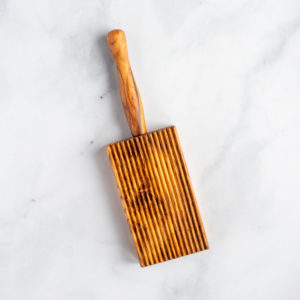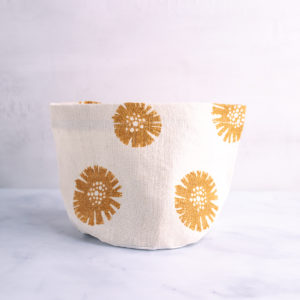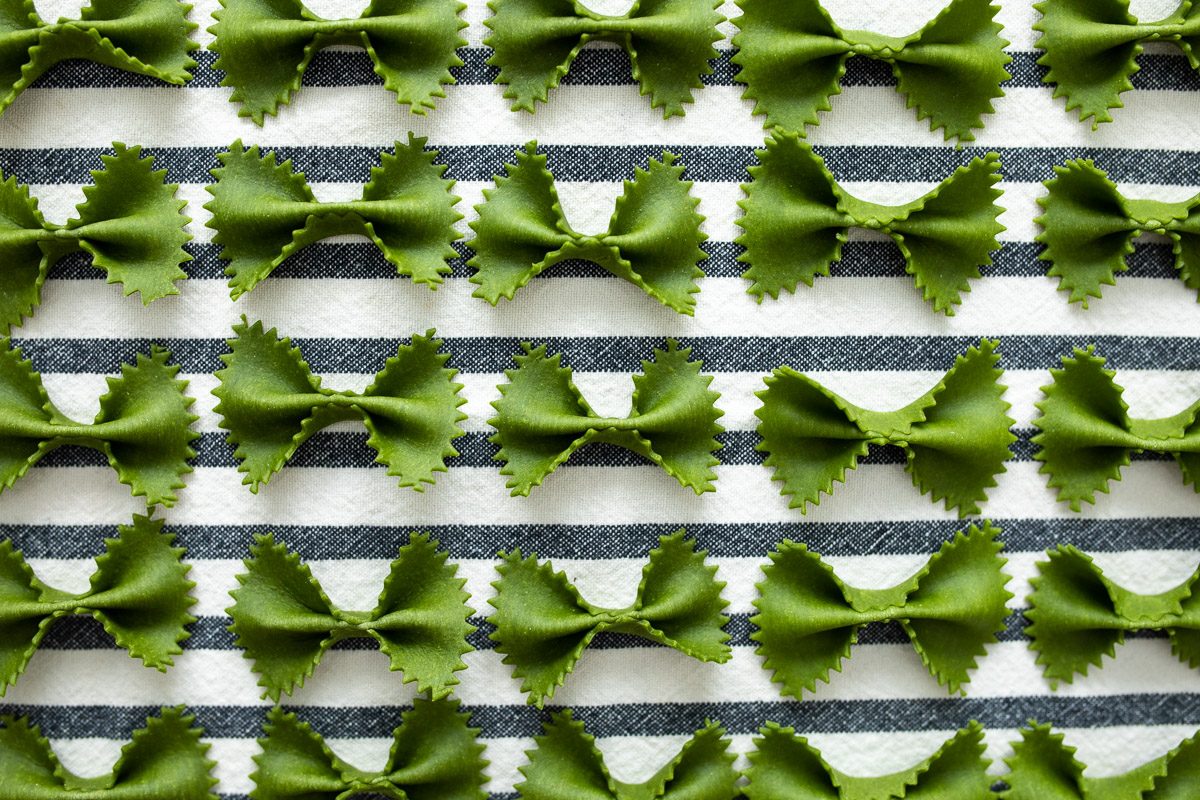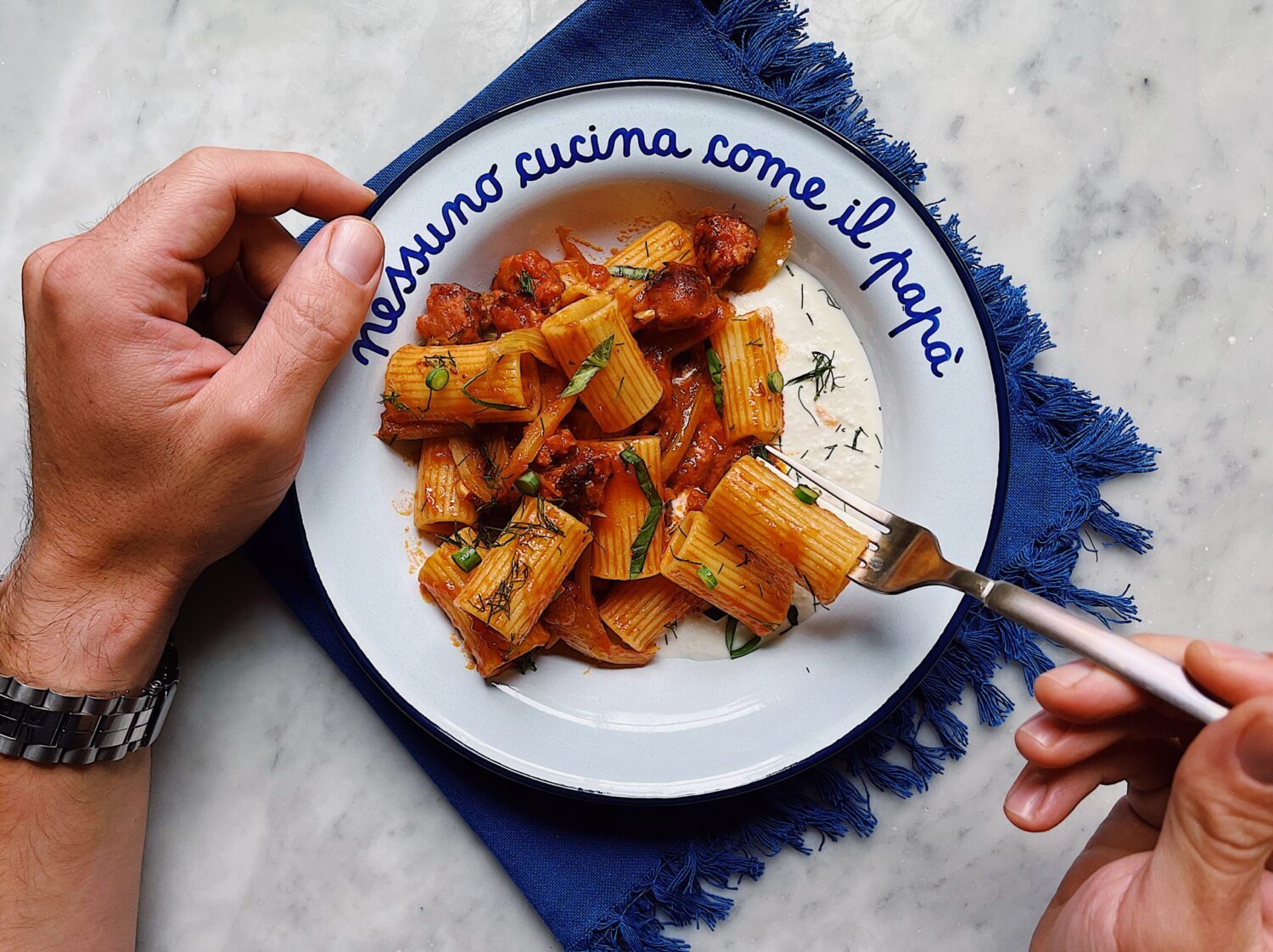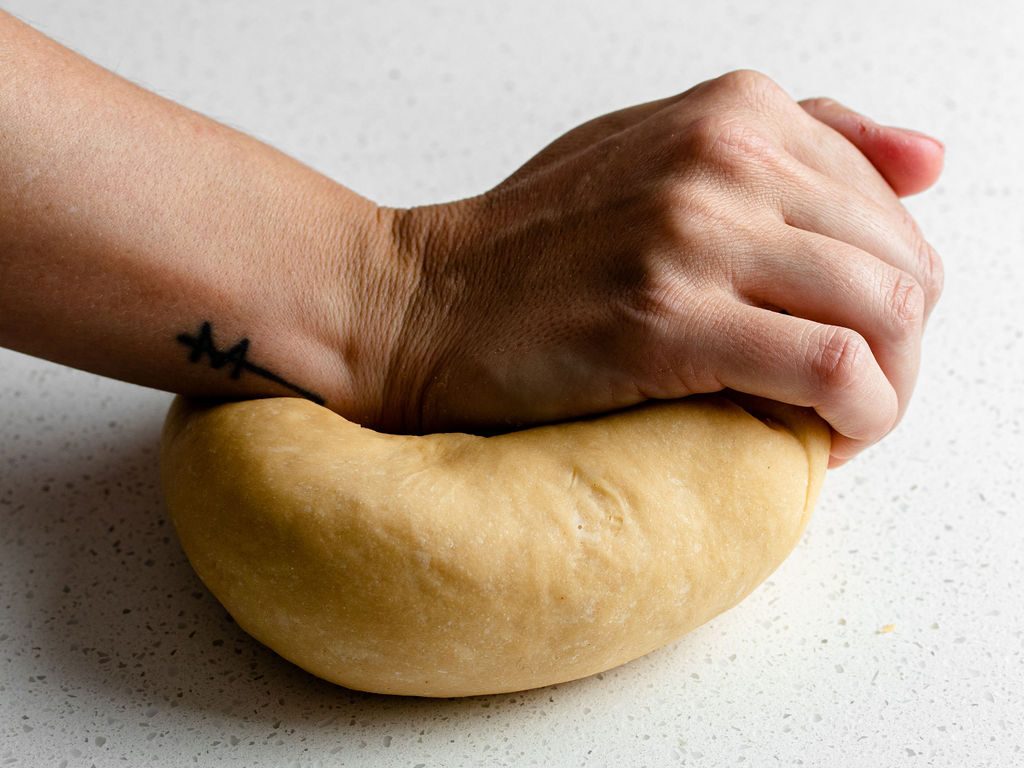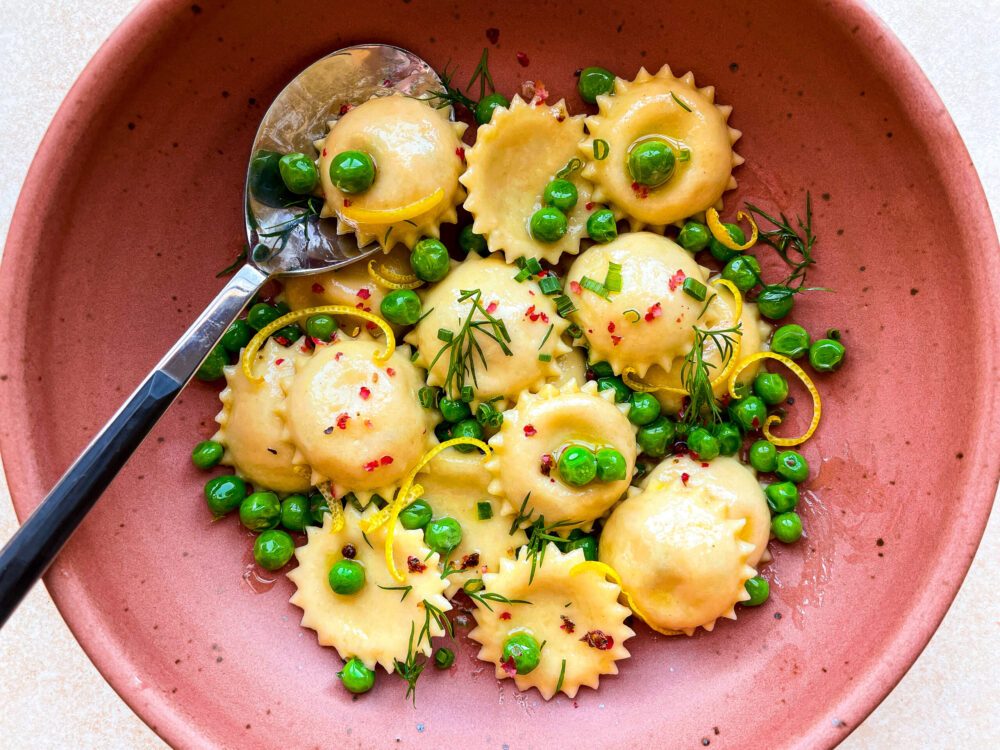
Smoked Salmon & Mascarpone Anolini with Buttery Peas
Recipe and photos by Meryl Feinstein
Anolini, tiny ravioli stuffed with rich, slow-cooked meat and served in broth, hail from Parma and are usually reserved for special occasions like Christmas. Here, these little pasta stars embrace the joy and lightness of spring, filled with a mixture of smoked salmon, creamy cheeses, lemon, and herbs that transports me straight back to my Jewish roots. Sweet shelled peas and rosy pink peppercorns provide balance and texture, bejeweling every bite with the freshness of the season.
Smoked Salmon & Mascarpone Anolini with Buttery Peas
Serves 4
Prep time: 3 Hours
Cook time: 10 Minutes
Special Equipment
- Kitchen scale (optional but helpful)
- Wooden work surface/cutting board (optional, but helpful)
- Food processor
- Pasta machine
- Anolini stamp
Ingredients
For the pasta:
350 grams (2¼ cups) 00 pasta flour or all-purpose flour
50 grams (5 tablespoons) semola rimacinata or semolina flour
225 grams eggs (approximately 4 large eggs and 1 to 2 yolks)
Semolina flour, for dusting
For the filling & sauce:
1 lemon
170 grams (6 ounces) hot-smoked salmon or lox, flaked or torn into pieces
140 grams (5 ounces) mascarpone
115 grams (4 ounces) whole milk ricotta
1 heaping tablespoon roughly chopped fresh dill, plus more for serving
1 heaping tablespoon minced chives, plus more for serving
Kosher salt and freshly ground black pepper
115 grams (1 stick; ½ cup) unsalted butter, divided
115 grams (¾ cup) fresh or frozen and thawed green peas
Crushed pink peppercorns, for serving (optional)
Method
To make the dough:
1. Make the pasta dough by hand (see instructions for the “well method” here) and knead it vigorously until smooth and firm, about 10 minutes.
2. Alternatively, add the flour and eggs to the bowl of a food processor fitted with the steel blade. Pulse in bursts until beads of dough start to form and the mixture comes together when pressed (it’ll look like pearl couscous). Transfer to a flat, ideally wooden surface, bring it together, and knead for 5 to 10 minutes until smooth and firm.
3. Wrap the dough tightly in plastic and allow it to rest at room temperature for at least 30 minutes. Meanwhile, make the filling.
To make the filling:
1. Carefully peel 2 or 3 long strips of zest from the lemon using a vegetable peeler, avoiding as much of the bitter white pith as you can. Then thinly slice each strip lengthwise into thin strands. Set aside. Zest the rest of the lemon finely using a zester or microplane. Cut the lemon into wedges.
2. Combine the salmon and cheeses together in a food processor fitted with the steel blade. Pulse until the mixture is smooth, creamy, and mousse-like, about 30 seconds, scraping down the sides of the bowl as needed. Add the herbs and the fine lemon zest. Pulse again, in short bursts, until just combined and the herbs are evenly distributed. Season to taste with salt, pepper, and a generous squeeze of lemon juice from one or two of the wedges (reserve the rest for serving).
3. Refrigerate the filling in a bowl or piping bag until ready to use. It can be made a day ahead and stored in an air-tight container in the refrigerator.
To make the anolini:
1. Line a sheet pan with semolina flour, cornmeal, or a dry dish cloth and keep it nearby. Cut off a quarter of the dough and re-wrap the remainder immediately.
2. Flatten the dough into a rough oval with the heel of your hand until it’s about ¼-inch thick. Set your pasta machine to its widest setting and roll the dough through once (it will be tapered at the ends). Rotate the dough 90 degrees and fold the ends into the center like an envelope, so the width of the folded pasta sheet is similar in width to the pasta roller. Flatten the dough again with your palm, then roll it through the widest setting once more so you’re left with an even-ish rectangle.
3. Continue rolling the pasta sheet through the machine once on each progressive setting until you have a thin sheet (about setting 8 on a Marcato Atlas 150 manual roller or setting 7 using the KitchenAid attachment). If the dough is at all sticky as it goes through the machine, or the sheet starts to tear on the surface (particularly with the KitchenAid), dust both sides with a little ‘00’ or all-purpose flour.
4. Lay the pasta sheet on a work surface, ideally wooden, and trim any uneven edges (ball up the scraps and wrap them in plastic to rehydrate—they can be rerolled after all of the fresh dough).
5. Fold the pasta sheet in half crosswise and make a crease to mark the midpoint, then unfold it again. Cut down the line of the crease so you have two even pieces.
6. Dust some ‘00’ or all-purpose flour on the bottom of one of the sheets (set the other to the side for now). Gently press the anolini stamp across the unfloured side of the first pasta sheet, just enough so you can see the shape’s outline but not enough to cut through. Fit as many outlines as possible while still leaving a little space between each one (you’ll be able to fit 3 across). This will be your guide for where to place the filling.
7. Spoon or pipe about a teaspoon of filling in the center of each outline, or enough so that it fills the circle just before the star edges.
8. If the dough is dry, lightly mist it with a spray bottle filled with water. Dust the surface of the second pasta sheet with a small amount of ‘00’ or all-purpose flour, spreading it around with your hand and removing any excess. Then carefully lay the pasta sheet on top of the filling, flour-side up, making sure everything is completely covered (you can stretch the dough a bit if needed).
9. Use the stamp to cut out the anolini by pressing down firmly over each heap of filling; it’ll still seal the pasta even if the filling broaches the edges. Peel away the scraps and cut them into pieces for soups or a snack. Transfer the anolini to the prepared sheet pan and repeat the process with the remaining dough and filling.
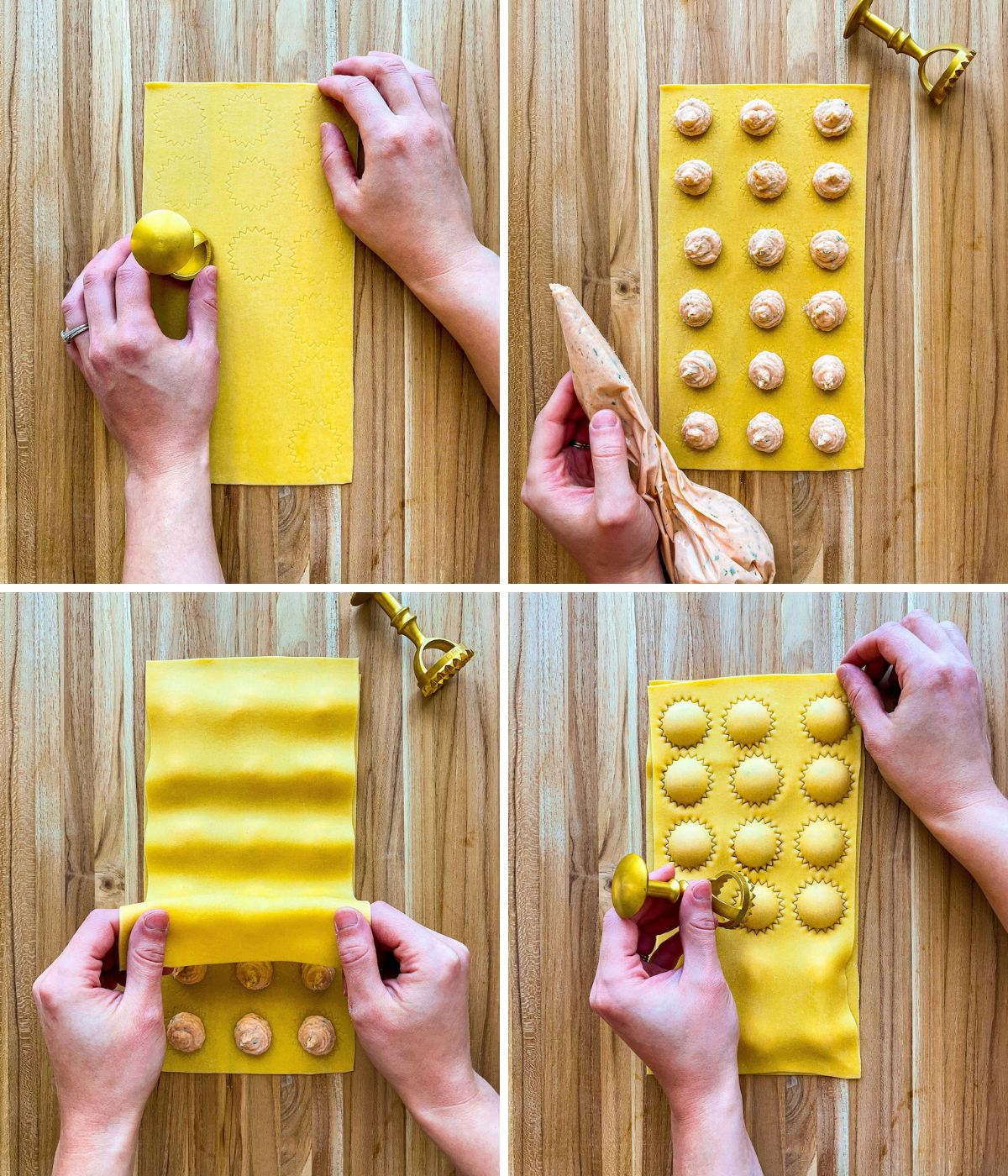
To serve:
1. Bring a large pot of water to a lively (not rolling) boil and salt it generously.
2. Melt half of butter in a large skillet or saute pan over medium heat—cut the rest into pieces and return to the refrigerator. When it starts to foam and sizzle, stir in the strips of lemon zest and a pinch of salt. Remove from the heat.
3. Carefully drop the anolini into the boiling water and stir for a moment to prevent them from sticking. Cook until tender, 2 to 3 minutes.
4. While the anolini cook, return the butter to medium heat. Add the peas and a pinch of salt and shake the pan to coat.
5. Use a spider sieve or slotted spoon to lift the anolini from the boiling water and add them directly to the butter sauce, along with the remaining cold butter. Cook, swirling the pan constantly, until the cold butter melts and the pasta is well-coated. Loosen the sauce with a spoonful of pasta cooking water as needed.
6. Divide the anolini among bowls. Spoon over the butter sauce and peas, and finish with minced chives, dill, and a sprinkling of crushed pink peppercorns (or lots of freshly ground black pepper). Enjoy immediately, with the remaining lemon wedges for squeezing.
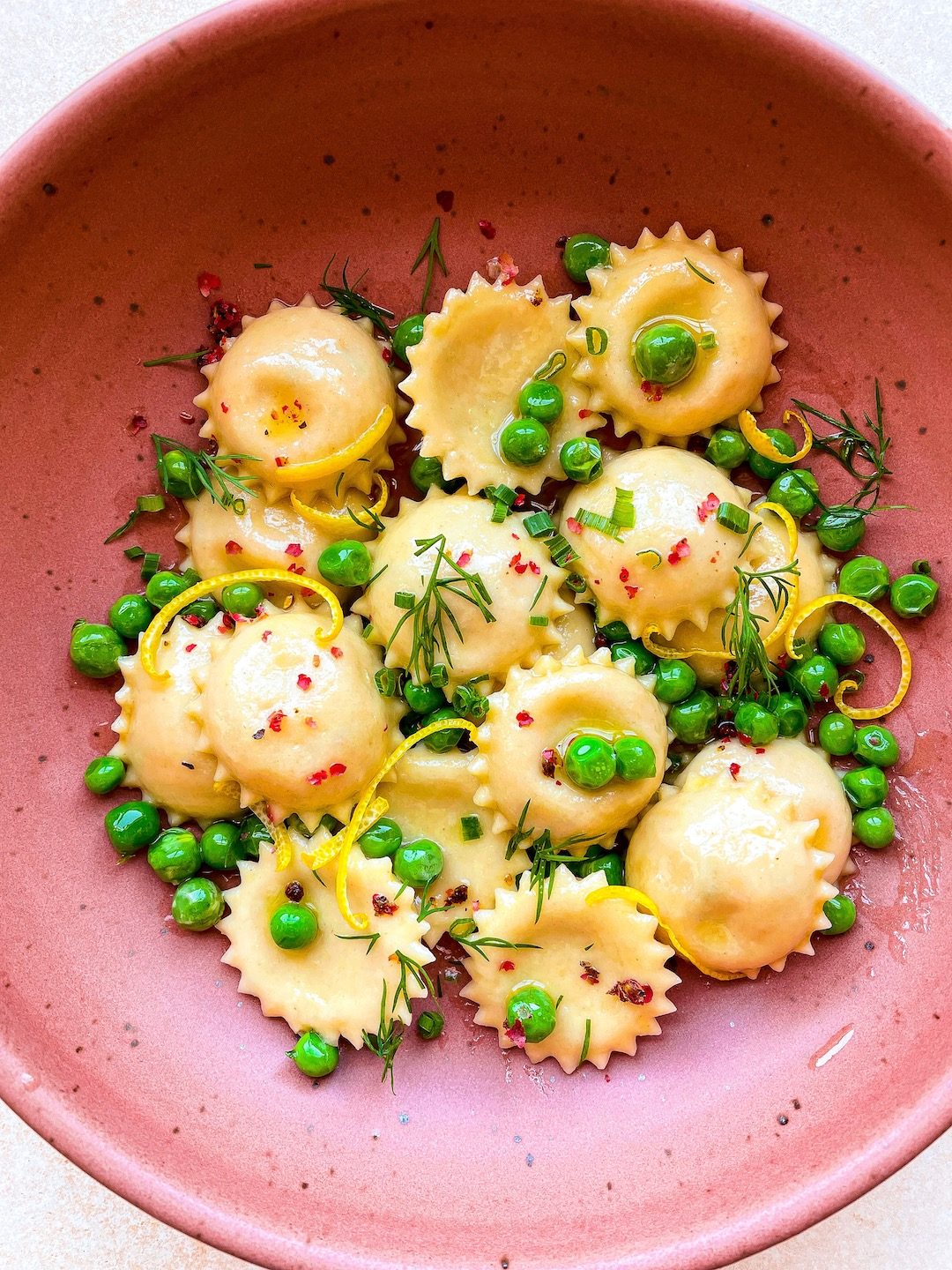

Meryl Feinstein is a chef, pasta maker, and food writer who left the corporate world for the food industry in 2018. After graduating from the Institute of Culinary Education, Meryl got her start at the renowned New York establishments Lilia and Misi, where she was part of the pasta production team. During her time in New York, she founded Pasta Social Club, a platform that brings people together over a shared love of food, learning, and making connections both on- and offline. Meryl now lives in Washington, D.C., where she develops recipes and teaches pasta-making workshops. She is the author of Pasta Every Day, a guide to making pasta doughs, shapes, fillings, and sauces with joy and confidence for all home cooks, which will be published in September 2023. Her dishes draw on her travels in Italy, ongoing research into the rich history of traditional pasta making, and her Jewish heritage.
Post a Comment
You must be logged in to post a comment.


